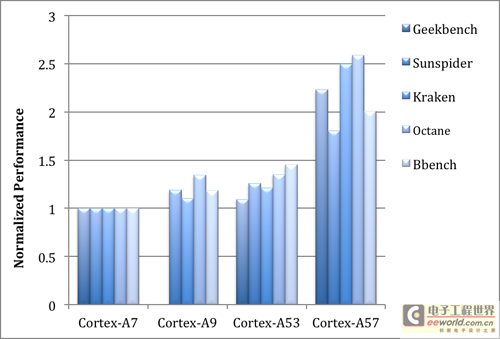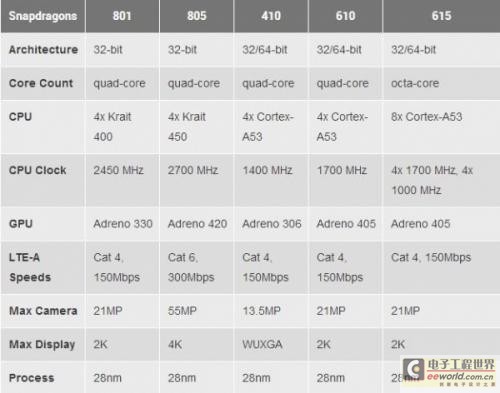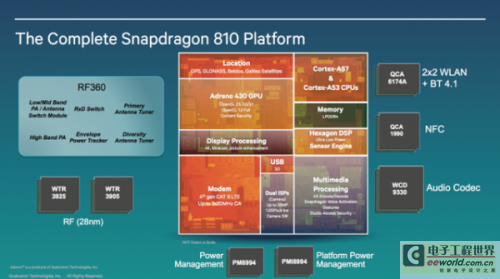The comparison of the five new mobile processor new products, who is in the trend of who is following the trend (1)
Major tech companies like Qualcomm, MediaTek, Samsung, and NVIDIA are expected to unveil their latest processor lines by the end of this year or early next year. Let’s take a closer look at what these industry leaders have in store for 2015. Qualcomm's 64-bit Snapdragon Processors In the past year, Qualcomm's Snapdragon 800 series was primarily found in high-end smartphones. However, the updated versions like the 801 and 805 didn’t bring significant performance improvements. Although many manufacturers started using the Snapdragon 805 with Adreno 420 GPU, the SoC still only offers around 300Mbps LTE-A download speeds, which is not much better than current industry standards. Instead, consumers are more excited about the upcoming Snapdragon 410, 610, and 615, which will be released later this year. These chips are based on the 64-bit ARMv8 architecture, though they don't represent Qualcomm's top-tier 64-bit designs yet. The Snapdragon 808 and 810 are the flagship models in the lineup. They are expected to offer substantial improvements over the current generation. These processors won’t outperform Qualcomm’s current offerings significantly. The 410, 610, and 615 all use the ARM Cortex-A53 core, which is an evolution of the Cortex-A9, not the more powerful Cortex-A15. Qualcomm claims that these chips can match the performance of the current Cortex-A9, similar to the Samsung Galaxy Note 2’s Exynos 4412. This architecture improves energy efficiency, allowing manufacturers to add more cores without draining the battery quickly. These new chips will also feature Qualcomm’s latest Adreno 400 GPU, offering enhanced graphics performance and power efficiency. Here’s how they compare to the current flagship Snapdragon processors: As seen in the table, the new 600 Series Snapdragon processors don’t directly match the current high-end models. The 410 and 610 won’t come close to the performance of the 801 or 805, but the 615 with its eight-core design offers better multi-threaded performance. The Adreno 405’s graphics capabilities aren’t much better than the Adreno 330, so we’ll need to wait for the next 800 series to see real improvements. Qualcomm’s upcoming processors are expected to bring a major boost in energy efficiency, helping devices maintain power under heavy loads, extend battery life, and improve LTE speeds in mid-range phones. Looking ahead to 2015, Qualcomm will release the Snapdragon 808 and 810 using 20nm process technology. Their performance is expected to match or exceed the current market-leading processors based on the Cortex-A57 architecture. The Adreno 418 and 430 GPUs will also offer slightly better graphics performance than current models. Additionally, the 808 and 810 will support higher screen resolutions and camera pixel counts, making them some of the most advanced chips available at the time. Most importantly, the shift to 64-bit won’t immediately lead to a massive performance leap. Qualcomm will first roll out mid-range products, which won’t disrupt the current market. If you just bought a flagship phone, there’s no need to worry—these new chips will likely appear in next year’s high-end smartphones. Solar Controller Mppt,Mppt Solar Charge Controller,12V Mppt Solar Charge Controller,60A Mppt Solar Controller GuangZhou HanFong New Energy Technology Co. , Ltd. , https://www.gzinverter.com

